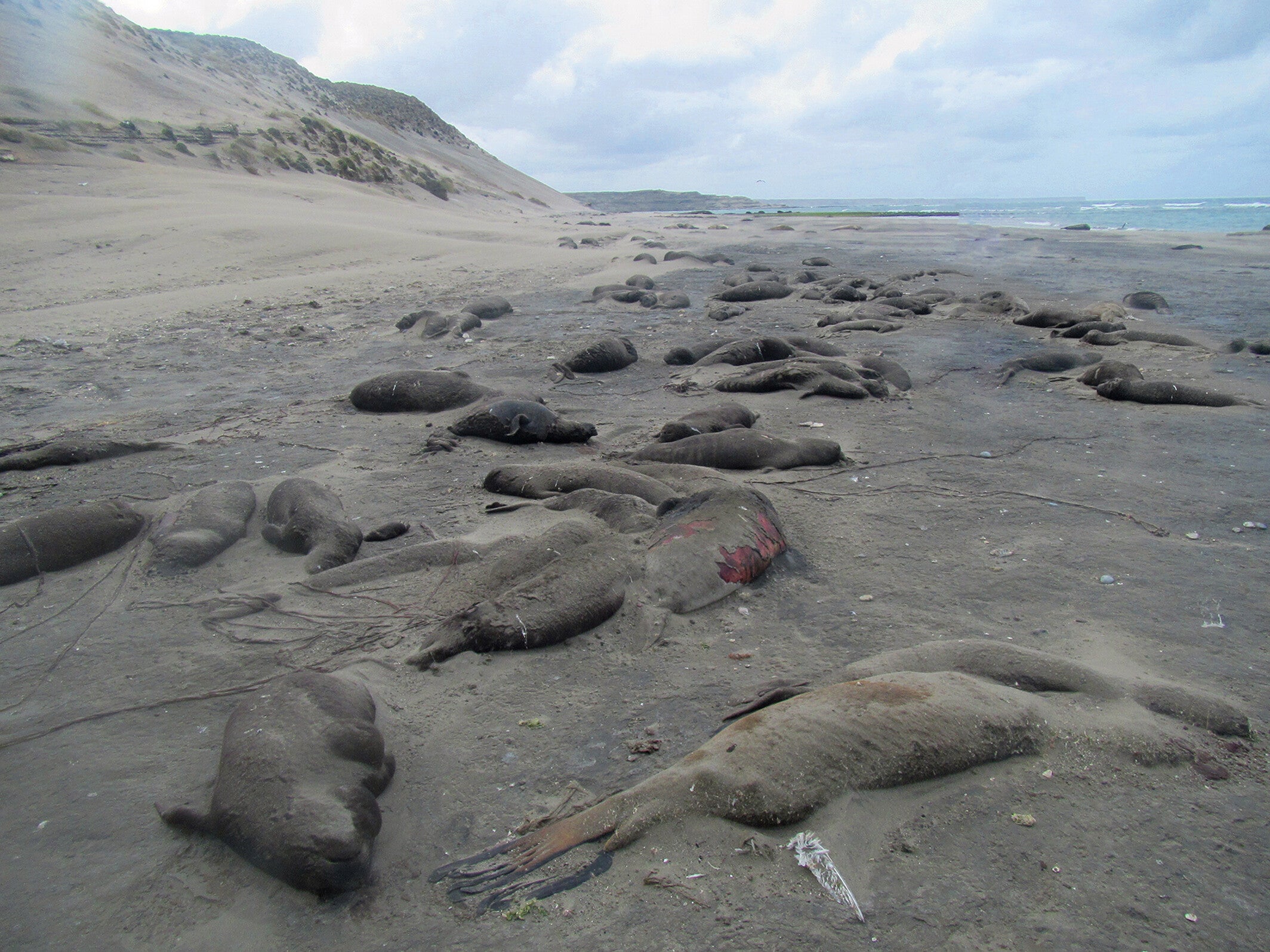
Understanding the Threat of Bird Flu
UC Davis Experts in One Health Weigh in on the H5N1 Influenza
Since 2022, a new, highly pathogenic strain of H5N1 influenza or “bird flu” has spread worldwide. In the U.S. it has affected over 100 million birds and for the first time, spread into dairy cows and a small, but growing, number of people. At UC Davis, experts in One Health — an approach that considers the health of people, animals and the environment together — are on high alert.
Nothing but death
Dead silence met Marcela Uhart and her team when they arrived at the elephant seal colony at Punta Delgada, Patagonia on Oct. 10, 2023.
“These beaches, at the peak of the breeding season, are bustling with life,” Uhart, director of the Latin American Program at the Karen C. Drayer Wildlife Health Center at the University of California, Davis, School of Veterinary Medicine, told a webinar in May. “The masters of the beach, the bull seals, interactions with mothers and their pups, that was not there. All we saw was carcass after carcass. … There was nothing but death.”

Dead elephant seals line a beach in Argentina in fall 2023. Avian influenza has caused the catastrophic die-off of thousands of elephant seals in Argentina, raising concerns for wildlife and human cross-species transmission. (Ralph Vanstreels, UC Davis)
Uhart was speaking at an Emergency One Health Consultation on Combating H5N1 Influenza organized by UC Davis Grand Challenges and the School of Veterinary Medicine. The May 16 event was held in response to growing concern about the number of cases of H5N1 influenza, or “avian influenza,” worldwide. It included an international panel of experts on infectious diseases, influenza, veterinary medicine, food safety, disease diagnostics and public health.
Overlapping wild and domestic animals, human health and environmental health, H5N1 is a quintessential “One Health” problem. H5N1 influenza normally circulates in wild birds, especially waterfowl, sometimes spilling over to domestic poultry. The virus is always evolving and sometimes a new, more lethal variant — a highly pathogenic avian influenza, or HPAI — appears.
